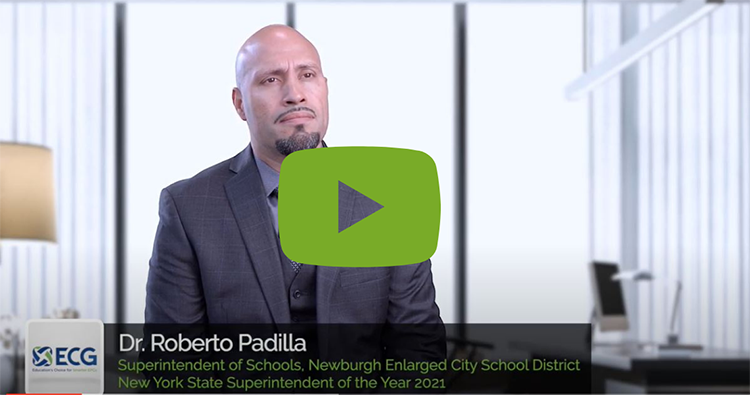Helping school districts create healthy, safe, energy efficient learning environments is our passion at Energia. It’s what drives our team of engineers and experts to find innovative, new solutions every day. When one of our clients is recognized for their efforts to improve their school district, it is our honor to help celebrate their achievements.
Earlier this month, our friend and colleague Dr. Roberto Padilla, former Superintendent of the Newburgh Enlarged City School District, was recognized as New York State Superintendent of the Year by the New York State Council of School Superintendents (NYSCOSS). Among his many achievements. Dr. Padilla is credited with creating the largest Energy Performance Contract (EPC) of any New York school district, which is expected to provide an annual savings of $1.3M in energy costs and reduce greenhouse gases by 60%.
Energia CEO Kendra McQuilton recently sat down with Dr. Padilla, to discuss the value of EPCs and lessons he can share with other districts.
Q: The Newburgh Enlarged City School District includes 2,000 employees, 1,100 teachers, 12,000 students, and 14 school buildings spread throughout four municipalities. How do you balance priorities in a district of that size? Where do building operations fall on the spectrum?
We address a number of really important priorities in our strategic planning process. One of those priorities is ensuring efficient operations. We want to be at the forefront of modernizing our facilities and putting in the infrastructure that allows our scholars and teachers to do the work we need them to do at a high level. This wasn’t about tinkering with the edges, so to speak, it was about a massive project to achieve building improvements and to create the kind of facilities that our children deserve. All of this work has been hyper-intentional. We want to have the best facilities. We want to have state of the art schools so our kids can truly flourish and they’re not cheated of any real opportunities that perhaps more wealthier school districts have.
Q: The Hudson Valley Post described you as “a champion for equity and access” with an “unwavering commitment to students.” How does this philosophy intersect with your EPC experience?
We are an urban/suburban school district, and we deal with issues of poverty just like many other districts. And as a result, it is often a challenge to close the achievement gap. For example, if a child is sitting in a classroom, hungry, that impacts their ability to focus and succeed. We prioritized that issue to set our students up for success, and we now have the third best breakfast program in the country.
The learning environment has a huge impact on student success. If it’s too cold or too hot, if there’s not enough airflow in a particular room, or if the lighting is off, all those environmental factors can negatively impact the learning and working environment. We made addressing that issue a strategic priority, and we now have one of the largest – if not the largest – energy performance contracts in the entire state of New York.
It’s a challenge to do more with less. But as true stewards of our resources, committed to our children, we continue to push forward despite not always having the necessary funds to do this critical work. That’s why partnering with Energia is has been so critical for us to realize annual savings – at no cost to taxpayers. It’s one way that we are trying to create equitable learning environments while also realizing cost reduction strategies that can help return resources to classrooms.
Q: How did you decide to move forward with an EPC?
Our decision was driven by a serious need to improve our facilities. It started off with some initial conversations and planning sessions around some hypotheticals. We asked ourselves, if we engaged in a slate of work, what kind of savings could we realize?
I visited other school districts and learned that we truly needed to start this work. We saw capital projects and energy performance contracts occurring all over the country. The more I networked with other superintendents, picked their brains, and understood the process, the more I realized that we had some real opportunities in front of us. But I didn’t fully know how great the savings could be. When the audit was completed, I was shocked at some of our gaps. And when I realized how much we could reduce energy costs, I started to see dollar signs going directly to classrooms. What made it even more sweet was that we could engage in this kind of work at no cost to the taxpayers.
We could address all of these different variables: remedy critical building needs, reduce energy costs, cut greenhouse gases and realize savings that ultimately could be repurposed to support students. It started to feel like a no brainer. Every time I came across new information, I felt like we were just prime candidates to really go further.
Q: What were some of the key improvements you made?
Our EPC was a massive undertaking, because we realized we didn’t just want to tinker and make some improvements in certain buildings. We had a real opportunity to touch every single building and improve them all dramatically. We have put solar panels on all nine of our schools, upgraded to LED lighting in all of our buildings, improved ventilation, cooling and heating and put in new windows across the district.
We’re starting to see the benefits of this work, and hearing our employees talk favorably of the upgrades and feel better knowing that they can approach their work a little differently and be more comfortable. Ultimately, we believe this will lead to improved employee outcomes.
Q: How has the EPC experience benefited the community?
The EPC experience has greatly benefited our entire community. When the taxpayers realized we could have these kind of modern updates, at no out-of-pocket-cost, it has helped build confidence that led to community support for other capital projects.
Q: What do you consider the major wins of your EPC?
There are several, but the fact that there is no cost to the taxpayer is really significant. I think people are stretched, especially now during this pandemic. So being able to engage in in this kind of work and not burden our community is of critical importance. We want people to be healthy. We want them to feel good when they come to school and work, and the environment matters in helping them to do that. And of course, anytime a district can realize unexpected savings and free up funds to address other needs, those are grand slam kind of opportunities.
Q: Any final words for your colleagues in other districts?
I encourage other districts to really consider engaging in this work because of the savings they may realize without taxing their community. Start doing the research and recognize whether you have the internal expertise to undertake this endeavor. I would venture to say most districts don’t, and that’s OK. Vet your resources and partner with experts who you are confident will guard the district’s best interests and maximize the amount of savings you could realize.
All students and all faculty and staff want to come to their place of work and know that improvements are being made on their behalf. They want to be able to come in and engage in a comfortable setting. They want to know that districts are advocating on their behalf to get them the materials, the training, the professional development that they need in order to execute at a high level. An EPC is one strategy of many, but it’s a critical strategy when you consider all the benefits that we’ve discussed

